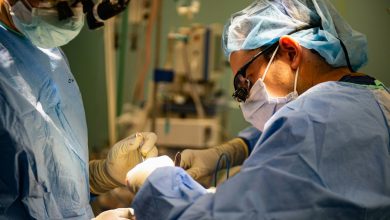
There’s been a lot of mass confusion and rampant disagreement about when the COVID-19 pandemic is going to calm down, how it’s going to end, and what steps we can take to solve the crisis. If there’s one thing that people agree on, it’s that leadership hasn’t made the solutions to these problems clear at all. Experts say one thing, leaders say another, and of course, there’s always “that guy you know” with the take that “no one is talking about.” Right, believe that guy.
One of the claims that have been tossed around in varying shapes and sizes is the idea that the warmer weather will suppress the spread of the novel coronavirus. Let’s take a gander at the science behind these claims and discuss whether the weather in all part of the world will stop the spread, whether we like it or not.
Virology and Weather
Let’s first look at the spread of disease as it relates to the cold weather. In fact, the common cold is so named because it is so associated with thrashing communities during the winter months. However, we know that while the virus may spread even more effectively in colder temperatures, it is not necessarily slowed down due to hotter temperatures.
No, according to Healthline and other sources, the spike in cold cases during the cold season is attributed to the cold, weakening the immune system. Additionally, dry heating and ventilation that is now prolific in the winter months contribute to the circulation of airborne particulate. Take this combined with the more tightly packed indoor crowds during the cold weather, and you have the perfect combination for a viral outbreak that has very little to do with the virus’s weather tolerance.
Additionally, viruses may survive at room temperature, even on dry surfaces, for up to 5 days. A University of Hong Kong Study published in Hindawi details that the SARS coronavirus, in particular, is adept at surviving under these conditions. While the study notes that temperatures as high as 56°C can kill the virus in a matter of minutes, this is far too hot to rely on the outdoor temperatures to have a fast-acting effect on suppressing coronavirus.
COVID-19 and the Heat: What We Know
According to Dr. Francis Collins, the director of the National Institute of Health in Bethesda, MD, we don’t yet have any hard data that confirms or rejects the theory of hot weather suppressing the novel coronavirus. However, the doctor notes that researchers have significant doubts that the summertime heat will play a role in slowing the spread of COVID-19.
He echoes similar science to what’s discussed above. A Princeton University study cited by Dr. Collins studied the connection between the spreading of flu-like viruses and warming climates. Their results strongly suggested that the spread of a virus is much more strongly due to a population’s unfamiliarity with an illness and their immune systems’ weakened ability to fight a foreign infection.
Not helping the cause is the public outcry against wearing masks. Predictably, the hot weather has now more than ever spurred on the defiant ones among us to liberate their mouths from their cloth prisons, even as spikes in the spread of coronavirus continue to appear across the United States. It’s quite understandable that wearing a facemask is uncomfortable for some people, even in the winter months. But it’s important that we all know how to stay safe during times of crisis.
Staying Safe in Unsafe Heat During COVID-19
So what can you do to protect yourself from the coronavirus during the summer months? Yes, wearing a mask and washing your hands continue to play key roles in keeping you and your family safe. But now that it’s summertime, you’re likely itching to get out of the house. If you’re not fortunate enough to have a strong central air conditioning system, you might have a very strong need to beat the heat in whatever ways you still can.
Pools and waterparks might be closed, but you may be able to find refuge in an isolated lake or river location to get some reprieve from the sun. As with any activity, even outdoors, it’s important to maintain social distancing standards by keeping a 6-foot radius from others at all times. If others are using a particular outdoor space and they aren’t in your immediate family, it’s best to find another area to use.
Although professional sports leagues are closer than ever to returning, science and common sense suggest that attending such a massive gathering, even outdoors, is simply a recipe for disaster. Such events as beach gatherings and block parties have been linked to viral spread in a given area. And as the study showed, even extremely high outdoor temperatures don’t necessarily kill the virus.
Even though it’s hot out, keep wearing your mask and maintaining a distance from others. Some of your outdoor activities are still simply off-limits for now. The warm weather is not going to halt the spread of COVID-19, no matter how many times you hear it in the news or see it in your social media feeds. The best things you can do to protect yourself, your family, and your community are to stay strong, be persistent, and practice all of the guidelines you’ve been hearing about for months to stay safe during the pandemic.



